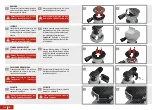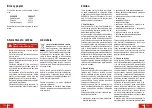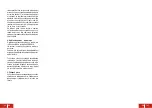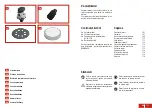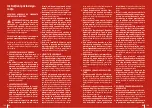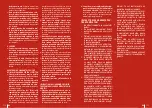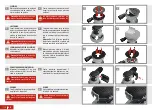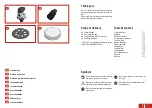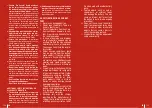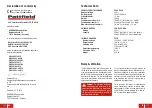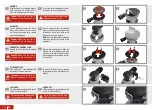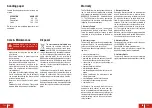
EN
124
EN
125
c)
Caution, fire hazard! Avoid overheat-
ing the object being sanded as well as
the sander. Always empty the collection
system before taking breaks.
In unfa-
vourable conditions, e.g., when sparks emit
from sanding metals, sanding debris in the
dust bag, micro filter or paper sack (or in the
filter sack or filter of the vacuum cleaner)
can self-ignite. Particularly when mixed
with remainders of varnish, poly-urethane
or other chemical materials and when the
sanding debris is hot after long periods of
working.
d)
When working with the machine, always
hold it firmly with both hands and pro-
vide for a secure stance.
The power tool
is guided more secure with both hands.
e)
Secure the workpiece.
A workpiece
clamped with clamping devices or in a vice
is held more secure than by hand.
f)
Do not touch and/or inhale harmful/
toxic dust generated during sanding. All
persons in the vicinity of the work area
must wear appropriate personal protec-
tive equipment for protection against
harmful/toxic dusts.
Use the dust extrac-
tion facility and keep the work area well
ventilated.
g) Ensure that you have removed foreign ob-
jects such as nails and screws from the
workpiece before commencing sanding.
h)
Do not force sander, let the tool do the
work at a reasonable speed.
Overloading
will occur if too much pressure is applied
and the motor slows resulting in inefficient
sanding and possible damage to the sander
motor.
i)
Don’t continue to use worn, torn or heav-
ily clogged sanding paper.
j)
Don’t touch the moving sanding paper.
ADDITIONAL SAFETY INSTRUCTIONS ON
RISKS DUE TO VIBRATION
a)
The declared vibration data represents
the main applications of the tool, but
different uses of the tool or poor main-
tenance can result in different vibration
data.
This may significantly increase the
vibration level over the total working period.
b)
Additional safety measure shall be taken
to protect the user from effects of vibra-
tion.
Maintain the tool and its accessories,
keep hands warm and organize work pat-
terns and periods.
SAFETY INSTRUCTIONS FOR BAT-
TERY
1.
Never use a damaged battery.
2.
Do not open the battery. There is a
risk of a short-circuit.
3.
Protect the battery from heat, e.g.
from continuous exposure to sun-
light, fire, water and humidity. There
is a risk of explosion.
4.
In case of damage and improper
use of the battery, vapours may be
emitted. Ventilate the area and seek
medical help in case of complaints.
The vapours can irritate the respira-
tory system.
5.
Under abusive conditions, liquid
may be ejected from the battery;
avoid contact. If contact acciden-
tally occurs, flush with water. If liq-
uid contacts eyes, additionally seek
medical help. Liquid ejected from
the battery may cause irritation or
burns.
6.
Use only original batteries with the
voltage indicated on the rating plate
of your electric power tool. If other
batteries are used, e.g. imitations,
reconditioned batteries or third-
party products, there is a risk of
injuries as well as damage caused
by exploding batteries.
7.
The battery voltage must match the
battery charging voltage of the bat-
tery charger. Otherwise there is a
risk of fire and explosion.
8.
Recharge only with the charger
specified by the manufacturer. A
charger that is suitable for one type
of battery pack may create a risk of
fire when used with another battery
pack.
9.
Pointed objects, such as nails or
screwdrivers, or external forces
may damage the battery. This may
cause an internal short-circuit and
the battery to burn, smoke, explode
or overheat.
10.
When not in use, keep the battery
away from paper-clips, coins, keys,
nails, screws, or other small metal
objects, that can cause a short-cir-
cuit at the charging contacts.
11.
Used batteries must be disposed of
safely and correctly.



